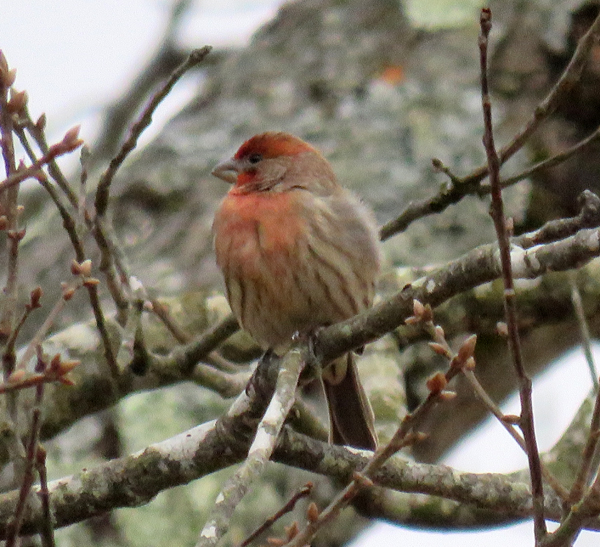Haemorhous mexicanus

Long Creek Park, Bethania NC
July 8, 2020

Mnemonic Description of song
hoarse warbling
What do we know about house finch song?*
Repertoire:
• Two categories (Mennill et al. 2006):
– with buzz usually at end (downward slur final note), sung throughout year (Thompson 1960b, Bitterbaum and Baptista 1979, Hill 1993b)
–without buzz, sung in breeding season (Thompson 1960b, Bitterbaum and Baptista 1979, Hill 1993b)
Neighbors:
- Dialects (Thompson 1960b, Mundinger 1975)
Females:
- Occasionally sing (Thompson 1960b)
How and when is song acquired?
- Begin learning in 1st or 2nd month (Bitterbaum and Baptista 1979)
- Produce poor song in late summer (Bitterbaum and Baptista 1979)
- Likely complete learning after juvenile dispersal (Bitterbaum and Baptista 1979)
How can we facilitate learning?
- Release as soon as possible
- Exposed to song in first month
*Eastern US song is described. In the western US there are less defined dialects, repertoire is larger, more syllable diversity and terminal portion of song is more variable (Mundinger 1975, Bitterbaum and Baptista 1979)
…………………………………………………….
Resources:
Bitterbaum, E. and Baptista, L.F. (1979). Geographical variation in songs of California House Finches (Carpodacus mexicanus). Auk 96: 462-474.
Mennill, D. J., A. V. Badyaev, L. M. Jonart and G. E. Hill. (2006). Male House Finches with elaborate songs have higher reproductive performance. Ethology 112:174-180.
Mundinger, P.C. (1975). Song dialects and colonization in the House Finch. Condor 77: 407-422.
Mundinger, P. C. (1975b). Song dialects and colonization in the House Finch, Carpodacus mexicanus, on the east coast. Condor 77:407-422.
Thompson, W. L. (1960b). Agonistic behavior in the House Finch. Part II: Factors in aggressiveness and sociality. Condor 62:378-402.